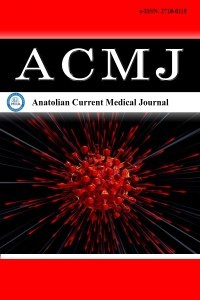1.
Siegel RL, Miller KD, Wagle NS, Jemal A. Cancer statistics, 2023.CA Cancer J Clin. 2023;73(1):17-48. doi: 10.3322/caac.21763
2.
SEER Stat Fact Sheets: Myeloma. National Cancer Institute. https://seer.cancer.gov/statfacts/html/mulmy.html. Accessed January 26,2023.
3.
Kyle RA, Therneau TM, Rajkumar SV, Larson DR, Plevak MF,Melton III LJ. Incidence of multiple myeloma in Olmsted County,Minnesota: trend over 6 decades. Cancer. 2004;101(11):2667-2674.doi: 10.1002/cncr.20652
4.
Sant M, Allemani C, Tereanu C, et al. Incidence of hematologicmalignancies in Europe by morphologic subtype: results of theHAEMACARE project. Blood. 2010;116(19):3724-3734. doi:10.1182/blood-2010-05-282632
5.
Phekoo KJ, Schey SA, Richards MA, et al. A population study todefine the incidence and survival of multiple myeloma in a NationalHealth Service Region in UK. Br J Haematol. 2004;127(3):299-304.doi: 10.1111/j.1365-2141.2004.05207.x
6.
Alyanakian MA, Taes Y, Bensaid M, et al. Monoclonalimmunoglobulin with antitransferrin activity: a rare cause ofhypersideremia with increased transferrin saturation. Blood.2007;109(1):359-361. doi: 10.1182/blood-2006-05-023762
7.
Krish P, Jhaveri KD. The case: hyperbicarbonatemia in a patient withWaldenstrom’s macroglobulinemia. Kidney Int. 2012;81(6):603-605. doi: 10.1038/ki.2011.427
8.
Kyle RA, Gertz MA, Witzig TE, et al. Review of 1027 patientswith newly diagnosed multiple myeloma. Mayo Clin Proc.2003;78(1):21-33. doi: 10.4065/78.1.21
9.
Katzmann JA, Clark RJ, Abraham RS, et al. Serum referenceintervals and diagnostic ranges for free kappa and free lambdaimmunoglobulin light chains: relative sensitivity for detection ofmonoclonal light chains. Clin Chem. 2002;48(9):1437-1444.
10.
Katzmann JA, Dispenzieri A, Kyle RA, et al. Eliminationof the need for urine studies in the screening algorithm formonoclonal gammopathies by using serum immunofixationand free light chain assays. Mayo Clin Proc. 2006;81(12):1575-1578. doi: 10.4065/81.12.1575
11.
Abadie JM, van Hoeven KH, Wells JM. Are renal reference intervalsrequired when screening for plasma cell disorders with serum freelight chains and serum protein electrophoresis? Am J Clin Pathol.2009;131(2):166-171. doi: 10.1309/AJCPR2M4EUYNHLGM
12.
Greipp PR, Leong T, Bennett JM, et al. Plasmablastic morphology--an independent prognostic factor with clinical and laboratorycorrelates: Eastern Cooperative Oncology Group (ECOG)myeloma trial E9486 report by the ECOG Myeloma LaboratoryGroup. Blood. 1998;91(7):2501-2507.
13.
Lin P, Owens R, Tricot G, Wilson CS. Flow cytometricimmunophenotypic analysis of 306 cases of multiple myeloma.Am J Clin Pathol. 2004;121(4):482-488. doi: 10.1309/74R4-TB90-BUWH-27JX
14.
Sahara N, Takeshita A, Shigeno K, et al. Clinicopathological andprognostic characteristics of CD56-negative multiple myeloma.Br J Haematol. 2002;117(4):882-885. doi: 10.1046/j.1365-2141.2002.03513.x
15.
Tembhare PR, Yuan CM, Venzon D, et al. Flow cytometricdifferentiation of abnormal and normal plasma cells in thebone marrow in patients with multiple myeloma and itsprecursor diseases. Leuk Res. 2014;38(3):371-376. doi: 10.1016/j.leukres.2013.12.007
16.
Lachmann HJ, Gallimore R, Gillmore JD, et al. Outcome insystemic AL amyloidosis in relation to changes in concentrationof circulating free immunoglobulin light chains followingchemotherapy. Br J Haematol. 2003;122(1):78-84. doi: 10.1046/j.1365-2141.2003.04433.x
17.
Mead GP, Carr-Smith HD, Drayson MT, Morgan GJ, Child JA,Bradwell AR. Serum free light chains for monitoring multiplemyeloma. Br J Haematol. 2004;126(3):348-354. doi: 10.1111/j.1365-2141.2004.05045.x
18.
van Rhee F, Bolejack V, Hollmig K, et al. High serum-free lightchain levels and their rapid reduction in response to therapy definean aggressive multiple myeloma subtype with poor prognosis.Blood. 2007;110(3):827-832. doi: 10.1182/blood-2007-01-067728
19.
Zhan F, Huang Y, Colla S, et al. The molecular classification ofmultiple myeloma. Blood. 2006;108(6):2020-2028. doi: 10.1182/blood-2005-11-013458
20.
Zhu AY, Zhu FB, Wang FC, Zhang LJ, Ma Y, Hu JG. Analysis ofrelationship between serum total light chain kappa/lambda ratioand proportion of bone marrow plasma cells in patients withIgG type and IgA type multiple myeloma. Zhongguo Shi Yan XueYe Xue Za Zhi. 2017;25(5):1454-1459. doi: 10.7534/j.issn.1009-2137.2017.05.030

